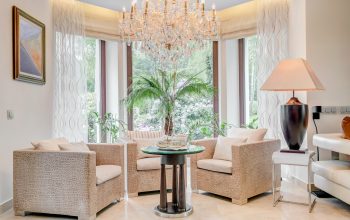Interior design is a delicate ballet between esthetics and utility where every element should accentuate the other to create a harmonic living environment. Reaching this harmony calls for careful consideration of several points of view, including space planning, variation plans, furniture selection, and personal style. We explore in this paper the ideas of balancing esthetics and utility in architectural interior design studio.
Grasping Functionality
- Any all-around planned environment starts with functionality. It combines tenant needs, the way a room is used, and the development of that space. Laying out the basic functionality of every area is crucial before delving into the esthetic elements. A work environment should function with efficiency and concentration; a living room should advance comfort and conversation.
- Functional space planning depends on viable design. Think through the room’s architecture and flow to make sure furniture placement accounts for basic development and access. By means of zoning techniques, one can help to define different areas within an open space, thereby enabling diverse activities to take place without feeling disorganized or disturbed.
- Another essential component of functionality is including clever capacity arrangements. An effective space not only enhances immaculate esthetic quality but also makes utilization easier. While still offering the necessary usefulness, covered stockpiling, multi-practical furniture, and implicit racks help to preserve a clean environment.

Underlining Esthetics
- In interior design, aesthetics refers to the visual elements influencing the environment and mental state. This covers surfaces, lighting, range of variation, and accent improvement. Although a room can be rather functional, it could seem cold and uninviting on the off chance that it requires visual appeal.
- The tone of a room depends on the various plots one chooses. Varieties can affect emotions and insights; for example, warm tones provide a cozy environment while chilly tones promote peace. Choosing colors that complement your style and coordinate with the capacity of the area is really essential.
- Including different surfaces and textures will give a place great richness and appeal. Combining soft textures with hard surfaces creates a striking contrast that enhances the whole aesthetic value. To create a harmonious and pleasant environment, think about employing common elements, including wood, stone, and others.
Balancing Things
- The real art in interior design is striking the ideal mix of aesthetics and utility. It is basic to ensure that neither angle passes the other. While a very practical space that penances aesthetics can feel chilly and unwelcome, a space that is well designed but requires functionality might leave its tenants unhappy.
- One of the most remarkable approaches to reaching amicability is adding personal contacts into the architecture. This could be via family pictures, artwork, or legacy stories told through objects. Individual elements improve esthetics as well as provide a warm and inclusive sense.
- The iterative design cycle reminds us that reaching equilibrium is usually a result of constant interaction. You are allowed to use several designs, styles, and furniture. Review your area regularly to ensure it reflects your style while nevertheless solving your problems.
The skill of juggling aesthetics and utility in architectural interior design studio areas into amazing and sensible, secure homes. Knowing the importance of the two elements and their interactions will help you create conditions that not only satisfy their intended use but also seem enticing. Accept the journey of designing your area and let your creativity flourish as you fit ability and splendour for your house.




